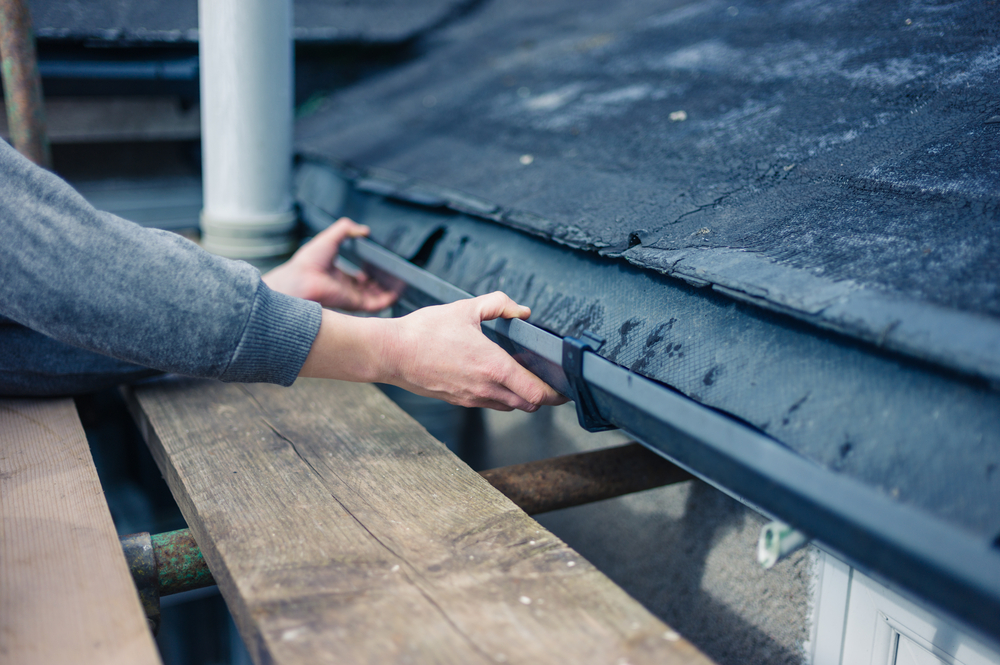
Gutter Replacement Guide – Seamless Gutterworks Co
June 29, 2025 1:49 pm Leave your thoughtsGutters play a crucial role in protecting your home from water damage by efficiently diverting rainwater away from the roof, walls, and foundation. Over time, however, gutters deteriorate due to weather exposure, physical damage, or simple wear and tear. When this happens, a gutter replacement becomes essential to safeguard your property. This comprehensive gutter replacement guide will help you understand when, why, and how to replace your gutters, while giving you insights into the materials, processes, and costs involved.
The Importance of Gutter Replacement
Many homeowners underestimate the importance of maintaining functional gutters until they begin to notice water leaks, mold growth, or even foundational cracks. Gutters channel water away from the home, preventing it from seeping into basements or damaging exterior walls. When gutters are clogged, cracked, or pulling away from the fascia, they cannot perform this critical function, leading to extensive water-related damage.
A timely gutter replacement can prevent these problems before they escalate. Replacing old gutters improves the efficiency of water drainage, protects landscaping, and can even enhance your home’s curb appeal. Moreover, new gutters can integrate modern features like leaf guards or seamless construction, reducing maintenance and boosting long-term durability.
Choosing the Right Gutter Material
One of the first steps in any gutter replacement project is selecting the appropriate material. Today’s market offers a wide range of gutter materials, each with its own strengths and weaknesses. Aluminum gutters are lightweight, affordable, and resistant to rust, making them a popular choice for most homes. Copper gutters are a premium option, adding elegance and exceptional longevity, though they come at a higher price point. Vinyl gutters are budget-friendly and easy to install, but may not withstand extreme temperatures as well as metal options.
Steel gutters, particularly galvanized steel, offer robust durability but may eventually rust if their protective coatings wear off. Zinc gutters combine a classic look with corrosion resistance and can last for decades. Seamless gutters, usually made on-site to fit perfectly, minimize the chances of leaks and are increasingly preferred by homeowners looking for a low-maintenance option.
When choosing gutter materials, think about your climate, budget, and personal style. A professional gutter contractor can help you weigh these factors and select a system best suited to your home.
The Gutter Replacement Process
Understanding the process of gutter replacement can help homeowners feel more prepared and confident. The first step is a thorough inspection, where a professional assesses the current gutter system and identifies problems such as sagging sections, corrosion, or inadequate pitch. Based on these findings, you can decide whether a partial or full gutter replacement is needed.
Once you approve a replacement plan, the old gutters will be carefully removed. During this stage, contractors may inspect the fascia boards for rot or damage since these components support the new gutters. If the fascia needs repair or replacement, it’s best to address it before installing new gutters to ensure structural integrity.
Next comes measuring and cutting the new gutters to size, followed by installation. Contractors use hangers or brackets to attach gutters securely, ensuring the correct slope for efficient water flow. Downspouts are then connected, positioned to move water away from the foundation. If you opt for gutter guards or leaf screens, these are installed last. A professional gutter installation can typically be completed in one to two days, depending on the size and complexity of your roofline.
Maintaining Your New Gutters
After a successful gutter replacement, maintenance is key to keeping your new system in top shape. Even the best-quality gutters will not function properly if clogged with debris. Cleaning your gutters at least twice a year — in spring and fall — is recommended. For homes with overhanging trees, more frequent cleaning may be necessary.
Installing leaf guards is an excellent preventive measure, reducing the frequency of cleaning and preventing blockages that could lead to overflowing water. During routine maintenance, also check for leaks, loose brackets, and any sagging areas. Prompt repairs will prolong the life of your gutters and ensure your investment continues to protect your home effectively.
It’s also wise to periodically inspect downspouts to make sure they are clear and properly channeling water away from your foundation. Pooling water around your home can lead to costly structural problems down the road. Professional gutter maintenance services are available if you prefer to leave this task to the experts.
Cost Considerations and Budgeting
The cost of gutter replacement varies significantly depending on materials, labor, and the size of your home. On average, homeowners can expect to pay between $5 and $15 per linear foot for standard aluminum gutters, while copper or zinc systems can range from $20 to $40 per linear foot. Labor costs generally add $2 to $5 per linear foot, depending on your region and the contractor’s expertise.
Additional factors, such as the complexity of your roofline, the number of stories, and whether gutter guards are included, will also influence the total price. Though gutter replacement represents a significant investment, remember that functional gutters protect against far more expensive water damage repairs in the future.
To get the best value, obtain multiple quotes from licensed and insured contractors. Ask for references, review past projects, and confirm warranty details before hiring. Investing in high-quality materials and skilled installation will save you money and headaches over the long term.
Conclusion
A gutter replacement may not be the most glamorous home improvement project, but it is among the most important. By maintaining a functional gutter system, you protect your investment, enhance your home’s exterior, and safeguard against the destructive forces of water damage. Whether you’re upgrading to seamless aluminum gutters or investing in timeless copper, understanding your options, planning your budget, and hiring skilled professionals will ensure your home stays protected for decades to come. If you suspect your gutters are nearing the end of their service life, don’t delay — a proactive replacement today can save you a world of trouble tomorrow.
Need Gutter Contractors Near You?
At Seamless Gutterworks Co., we take pride in serving the Ames community with dependable, personalized gutter services backed by over 30 years of experience. Whether you need installation, repairs, or maintenance, our knowledgeable team is here to guide you every step of the way—with top-quality materials, lifetime warranties, and a commitment to doing the job right the first time. Reach out to us today for a free consultation—we’re ready to protect your home from whatever the Iowa weather brings!
FAQs
1. How long do new gutters last?
Most aluminum or vinyl gutters last 20–30 years, while copper or zinc systems can last 50 years or more with proper maintenance.
2. Do I really need seamless gutters?
Seamless gutters reduce the risk of leaks and require less maintenance, making them a great option if you want long-term performance and a sleek appearance.
3. When is the best time to replace gutters?
Spring and early summer are ideal because weather conditions are milder, but a professional can replace gutters any time temperatures are above freezing.
4. Can I replace my gutters myself?
While DIY gutter replacement is possible, improper installation could lead to drainage issues and costly water damage. Professional installation is recommended for most homeowners.
5. How do I know if my gutters need replacement instead of repair?
If your gutters have widespread rust, cracks, holes, or persistent leaks despite repairs, it’s usually more cost-effective to replace the entire system.
Categorised in: Gutters
This post was written by admin
